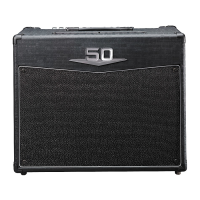Important Information About Tubes and Tube Products:
A
Brief History Of The Tube:
In 1883, Edison discovered that electrons would flow from a suspended filament when enclosed in an evac-
uated lamp. Years later, in 1905, Fleming expanded on Edison's discovery and created the "Fleming Valve".
Then, in 1907, Dr. Lee de Forest added a third component – the grid – to the "Fleming's Valve" and the vac-
uum tube was a fact of life. The door to electronic amplification was now open.
During World War II, data gleaned from their intensive research on the detectors used in radar systems led
Bell Telephone Laboratories to the invention of the transistor. This reliable little device gained quick support
as the new component for amplification. The death of the vacuum tube seemed imminent as designers, sci-
entists, and engineers reveled in the idea of replacing large, fragile glass tubes with these small, solid-state
devices.
However, there were (and still are) many serious listeners who realized that the sound produced by a "tran-
sistor" amplifier is significantly different from that produced by a tube amplifier with identical design specifica-
tions. They considered the sound produced by these new solid-state devices to be hard, brittle, and lifeless.
It was determined that solid-state devices produced a less musical set of harmonics than tubes. When pushed
past their limits, they tend to mute the tone and emphasize the distortion.
Tubes, on the other hand, produce a more musical set of harmonics, the intensity of which can be controlled
by the player. This characteristic adds warmth and definition to the sound which has become the hallmark of
tube amplifiers. When tubes are driven into clipping, the harmonic overtones can be both sweet and pleasing
or intense and penetrating, depending on the musician’s musical taste and playing technique.
Over the years, application engineers have designed a number of outstanding solid-state amplifiers that
sound very, very good. Some use special circuitry which enables them to simulate the distortion characteris-
tics of a tube amplifier. However, the tube amplifier, still held in the highest esteem by many musicians, offers
a classic "vintage" sound in a contemporary market.
T
ube Types And Usage:
Tube amplifiers are based primarily on two types of tubes – preamplifier tubes and power tubes. The tubes
used in preamplifiers (12AX7, 12AU7, 12AT7, etc.) are smaller than the power tubes. These tubes amplify
the signal from your instrument and shape the sound. They are inherently microphonic (mechanically pick
up and transmit external noises). Since these tubes are used in the critical first stages of a tube amplifier's
circuitry, it is very important to use high-quality, low noise/low microphonic tubes for this application.
Although tubes of this quality may be difficult to find and typically cost more than "off-the-shelf" tubes, the
improvement in performance is worth the investment.
Preamplifier tubes are also used to drive the power tubes. When used in this application, a 12AX7 will pro-
duce a more distorted tone than a 12AT7, which produces a clearer, sweeter sound. A 12AU7 is even
cleaner and brighter than a 12AT7, giving more definition to the sound. (In some cases it is possible to
change the sound by changing the type of preamp and/or driver tubes. When making any modification to
your equipment, it is highly recommended that you consult with a qualified service center.)
The power tubes are the largest tubes used in an amplifier. These tubes convert the low-level, conditioned
signal from the preamplifier into a level that is sufficient to drive the speakers. There are several types of
power tubes available, each of which offers a different performance/sound characteristic. For example, the
EL34 power tube produces a great Classic rock sound. When an EL34 is driven into distortion it produces a
unique sound ("crunch"). When compared to the EL84 and 6L6, the EL34 distorts more quickly, exhibits a
6
VFX5112/5212 Guitar Amplifier

